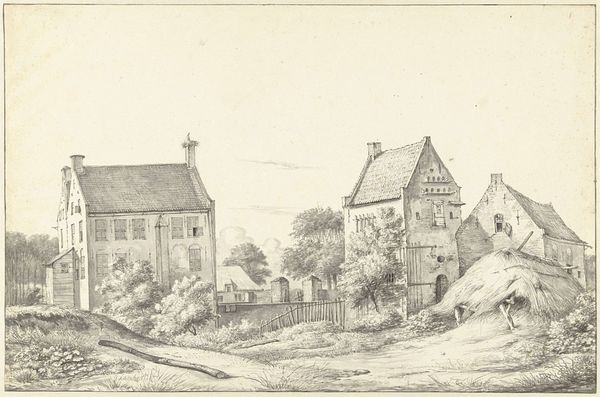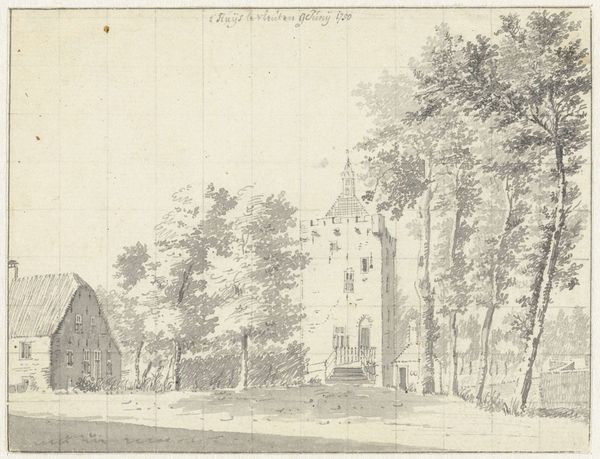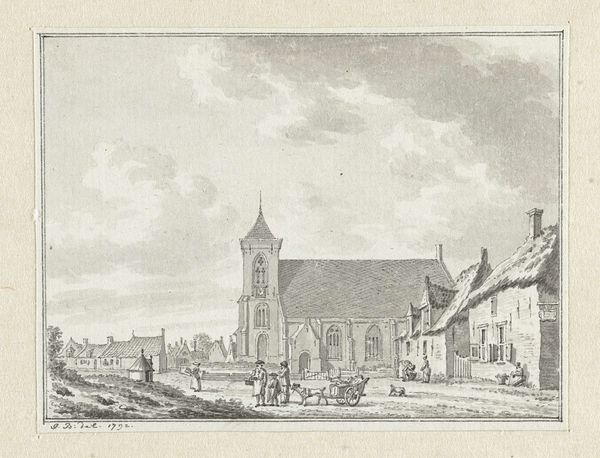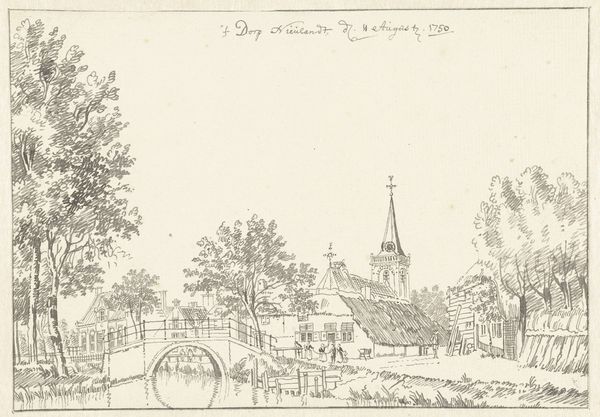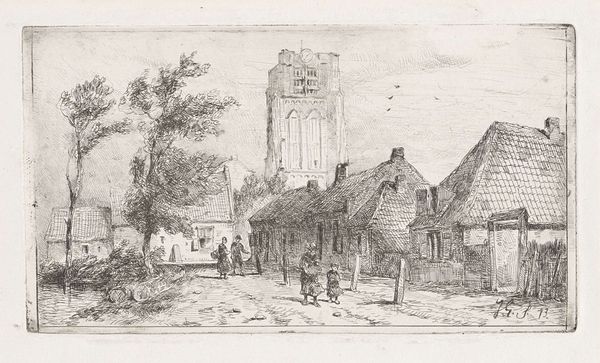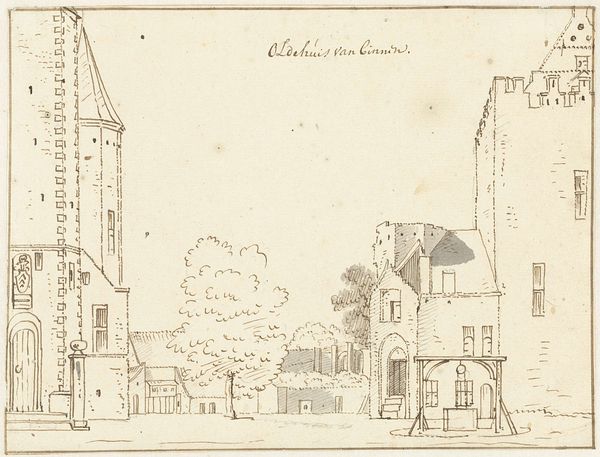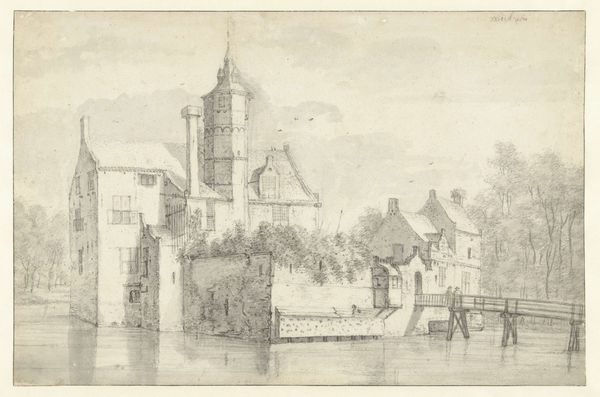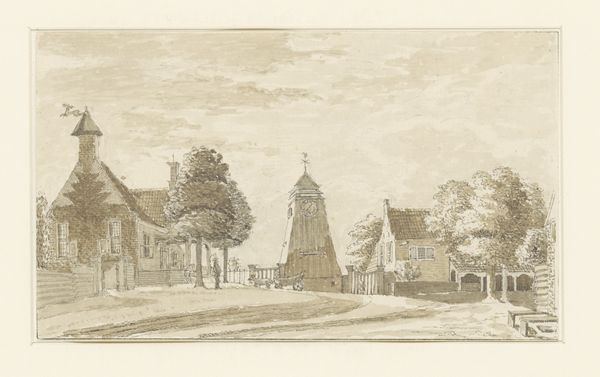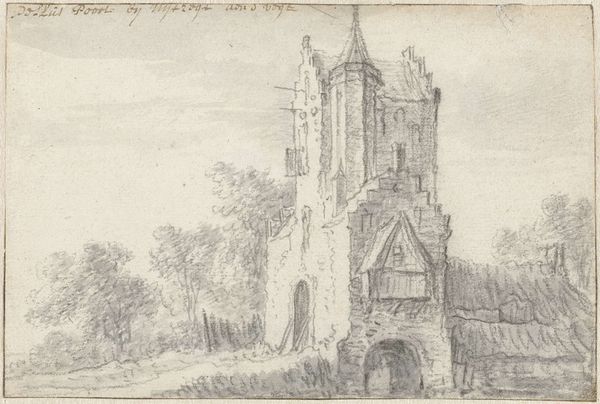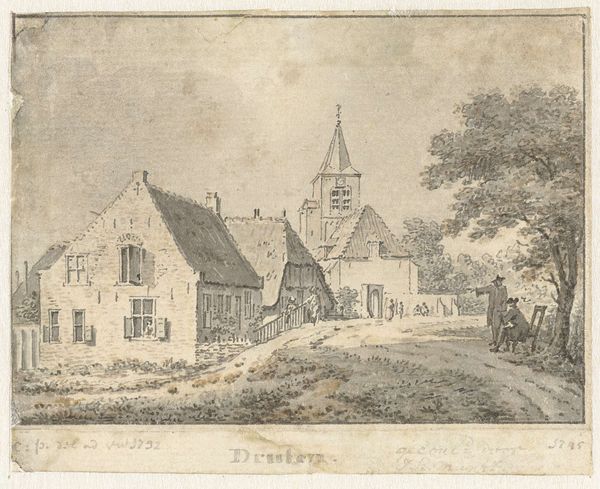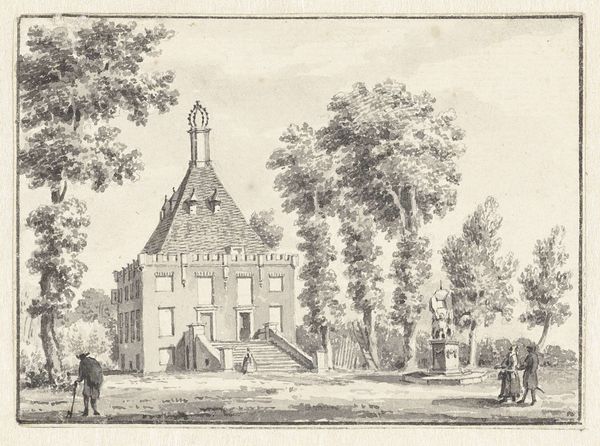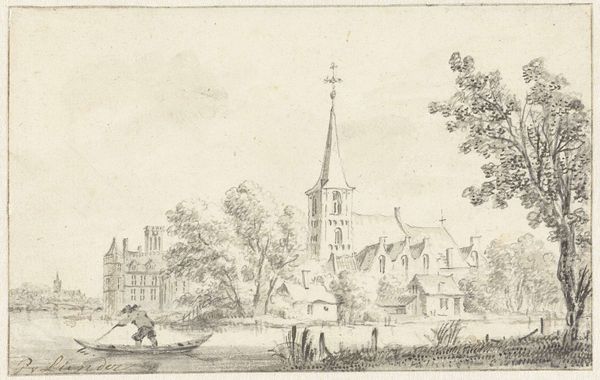
drawing, ink, pen
#
drawing
#
baroque
#
dutch-golden-age
#
landscape
#
ink
#
pen-ink sketch
#
pen work
#
pen
#
cityscape
#
realism
Dimensions: height 148 mm, width 238 mm
Copyright: Rijks Museum: Open Domain
Editor: Here we have "De Hoenderpoort te Nijmegen," a pen and ink drawing, possibly from 1752-1756, by Jan de Beijer. It feels like a snapshot of a quiet, everyday scene, but the buildings seem quite imposing. How do you interpret this work? Curator: This seemingly simple cityscape opens a window into the socio-political landscape of the Dutch Golden Age. Consider the Hoenderpoort itself – a city gate. Gates are not just about physical access; they are about control, surveillance, and the regulation of movement. Who was allowed in, and who was kept out? Editor: That’s interesting! I hadn't thought about the gate in terms of power dynamics. Curator: De Beijer gives us realism, but it is selective realism. Are there marginalized communities represented here? Who *isn't* depicted in this idyllic scene, and why? Think about whose stories aren't being told, and how the composition might subtly reinforce existing hierarchies. What kind of people occupied the nice houses versus lived beyond the city walls? Editor: So, even in what seems like a straightforward landscape, there's an undercurrent of social commentary. Curator: Precisely. And remember, art is never neutral. It either challenges or reinforces existing power structures. De Beijer's work invites us to question whose perspective we're seeing, and what that perspective obscures. Editor: I see the drawing with new eyes now, more aware of its potential to reveal societal structures. Thanks. Curator: Indeed, art is an access point for us to rewrite the cultural narrative.
Comments
No comments
Be the first to comment and join the conversation on the ultimate creative platform.
